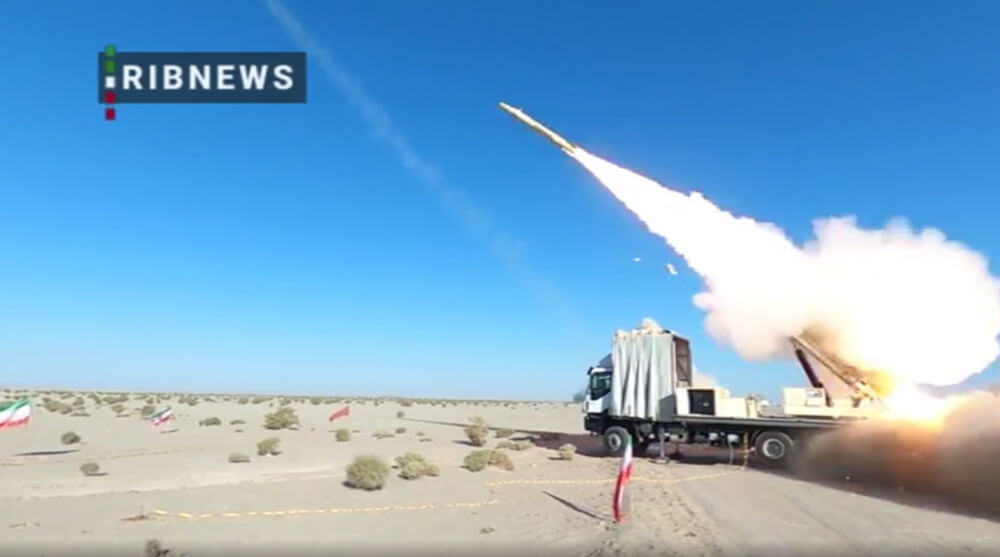The Wall Street Journal on September 6 reported that Iran has delivered short-range ballistic missiles, including the Fath-360, to Russia.
Earlier in August, two European intelligence sources told Reuters that dozens of Russian military personnel are being trained in Iran to use the Fath-360 close-range ballistic missile system.
The Reuter report added that Russian defense ministry representatives likely signed a contract on December 13, 2024, for the delivery of hundreds of Fath-360 and Ababil missiles built by Iran’s government-owned Aerospace Industries Organization (AIO).
The FATH-360 is a short-range missile with a maximum range of 120 km and a warhead of 150 kg. It travels at speeds ranging from Mach 3 to 4 and uses a combination of inertial and satellite guidance to achieve an accuracy of 30 m. Their high speed makes them difficult to intercept.
This development has raised significant concerns among Western countries, including the United States.
The Institute for the Study of War (ISW) was among the first to discuss Russia’s plans for the use of these missiles against Ukraine’s infrastructure.
Past Reports
The problem with the “Iranian missiles for Russia” reports is that similar reports have surfaced in the past.
As far back as late 2022, Bloomberg reported the sale of Iranian FATH-360 missiles to Russia, citing European officials. Then too, the sale was reported as being “imminent.” The Bloomberg report was followed up by a confirmatory report from Reuters.
Iranian Denial
The likelihood of such a sale is debatable. While Western mainstream media reports have cited unnamed intel (shady by profession) officials, Iranian denials have been officials.
Iran’s mission to the United Nations vehemently denied the report, stating that Iran considers providing military assistance to parties involved in the conflict as inhumane, as it leads to increased human casualties and destruction of infrastructure.
Iran emphasized that it abstained from such actions and pointedly called on other countries to cease supplying weapons to the sides involved in the conflict.
Questionable Authenticity, Unquestionable Alarm
Under the circumstances, one does start to wonder if Western reports of the missile sales are rooted in geopolitical strategies. Their persistence reflects a complex interplay of regional power dynamics and military interests. The reports may well be aimed at preventing rather than reporting a shift in military capabilities.
The veracity of these reports can be challenging to ascertain due to the sensitive nature of military transactions and the often classified or undisclosed details involved.
However, the implications of such transfers, if true, are considered significant enough to warrant the attention and concern of multiple nations and international bodies.

Shift In Balance?
The Fath-360 missiles (also known as BM-120) are analogous to the Russian Tornado-S guided missiles.
They are more powerful analogs of the American GMLRS missiles for the HIMARS (M270) MLRS used by the Ukrainian Armed Forces. However, the FATH-360 falls woefully short when it comes to accuracy in any comparison with the HIMARS.
We have all seen footage of HIMARS rockets destroying Russian bridges with sniper-like accuracy. A FATH-360 missile with 30 m accuracy would not be able to do that, other than by fluke. However, a 30m accuracy at 150 km is still a very credible threat.
The Fath-360 missile system utilizes a truck-mounted Transporter Erector Launcher (TEL) designed to carry and launch multiple missiles. The launcher can come with two, three, four, or six-round launch containers. Each container holds one missile, allowing for various load-outs depending on the mission requirements.
These launchers are mounted on trucks and optimized for “shoot and scoot” – they can quickly relocate after firing to avoid counter-battery fire.
The FATH-360 missile’s focus on mobility and rapid deployment, as well as its longer range compared to HIMARS, compensate for its lesser accuracy.
If the Reuters report is indeed true, Russia is likely to acquire the truck-mounted twin-tube launcher variant. This variant would be difficult for NATO ISR and Ukrainian drones to detect—far more difficult to detect than Russian MLRS such as the Tornado-S.
Also, the longer range of the FATH-360 missiles would allow the launchers to stay out of the HIMARS range.
The Fath-360 launchers would be dispersed over a wide area. Even when detected, the smaller-sized launcher would make an ATACMS attack less effective—from both cost and lethality angles.

Cost Effective Weapon
Currently, Russia has to use its Iskander-M quasi-ballistic missile to take out HIMARS and ATACMS launchers.
Besides being non-interceptable, the Iskander-M can arrive at a target much faster than any other Russian missile—literally within minutes. This is particularly useful if the target is likely to move within a short time, such as a HIMARS launcher or troop/equipment concentrations.
Despite the ramp-up in production, the number of Iskander-M missiles available to the Russian forces is likely to remain well below the required number. Equally important, the Iskander-M is far more expensive and lethal than what is required to destroy troop or equipment concentrations.
The FATH-360 represents an affordable and effective alternative.
If Russian forces do induct the missiles, they will be able to hit many more targets in the enemy’s operational rear area through widespread deployment of the cheaper FATH-360 systems.
Conclusion
The big question, of course, remains whether Russia is indeed getting the Iranian missile.
Can the Western media and Iranian officials at the UN both be true?
For the Russian forces to operationally induct the Iranian missile, the FATH-360 would need to be integrated into Russia’s networked battlefield management system. This system detects targets, assigns them to field-deployed weapon systems, and relays targeting information to them in real-time.
Such integration would require the Iranian systems to be equipped with existing Russian electronic hardware that supports battlefield management networking.
It’s also likely that Iranian missile systems would have to be fitted with equipment to mitigate drone threats. The FATH-360 missile, which uses SATNAV, would need to be fitted with battle-hardened Russian SATNAV receivers.
Finally, the tweaks and upgrades would have to be extensively tested. Russia would then need to assemble (produce) the updated missiles and system and train its forces to use them.
All in all, implementing upgrades, production, and training could easily have taken 2 years.
- Vijainder K Thakur is a retired IAF Jaguar pilot, author, software architect, entrepreneur, and military analyst.
- VIEWS PERSONAL OF THE AUTHOR
- Follow the author @vkthakur




